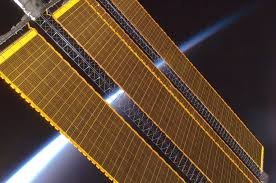Satellite Solar Cell Materials Market Overview:
The satellite solar cell materials market is experiencing robust growth, driven by the increasing deployment of satellites for communication, navigation, earth observation, and scientific research. Solar cell materials are critical for providing reliable and long-lasting power to satellites in space, ensuring uninterrupted operations.
Global satellite solar cell materials market size and share is currently valued at USD 37.21 million in 2023 and is anticipated to generate an estimated revenue of USD 111.46 million by 2032 , according to the latest study by Polaris Market Research. Besides, the report notes that the market exhibits a robust 13.2% Compound Annual Growth Rate (CAGR) over the forecasted timeframe, 2024 – 2032
Key Market Drivers:
- Rising Demand for Satellite-Based Services: The growing need for high-speed internet, GPS, and remote sensing applications is driving the demand for satellites, boosting the market for solar cell materials.
- Advancements in Solar Cell Technologies: Innovations in materials like gallium arsenide (GaAs) and multi-junction solar cells are enhancing the efficiency and durability of satellite power systems.
- Increased Space Exploration Activities: Expanding government and private investments in space exploration and satellite constellations are fueling the demand for advanced solar cell materials.
Key Companies in Satellite Solar Cell Materials Market:
- AIRBUS
- AZUR SPACE Solar Power GmbH
- CESI .IT
- MicroLink Devices, Inc
- Mitsubishi Electric Corporation
- Northrop Grumman
- ROCKET LAB USA
- Sharp Corporation
- SPECTROLAB
- Thales Alenia Space
Industry Developments
The industry has seen significant advancements in the development of lightweight, radiation-resistant, and high-efficiency solar cell materials tailored for space applications. Collaborative efforts between space agencies, satellite manufacturers, and material scientists are driving innovation in next-generation solar technologies. Additionally, private players are investing in scaling up production capabilities to meet the growing demand for satellite launches.
Future Outlook
The satellite solar cell materials market is expected to grow steadily, supported by the rising number of satellite launches, advancements in material science, and increasing investments in space exploration. Emerging markets in Asia-Pacific and rising interest in low-Earth orbit (LEO) satellite constellations present significant growth opportunities.
Explore the Complete Comprehensive Report Here:
https://www.polarismarketresearch.com/industry-analysis/satellite-solar-cell-materials-market
Satellite Solar Cell Materials Market Segmentation:
Polaris Market Research has segmented the satellite solar cell materials market report based on deployment mode, offering, threat type, organization size, and vertical, providing detailed insights into market trends and growth opportunities.
Satellite Solar Cell Materials, Material Types Outlook (Revenue – USD Million, 2019 – 2032)
- Gallium Arsenide (GaAs)
- Silicon
- Copper Indium Gallium Selenide (CIGS)
- Others
Satellite Solar Cell Materials, Orbit Outlook (Revenue – USD Million, 2019 – 2032)
- Highly Elliptical Orbit (HEO)
- Medium Earth Orbit (MEO)
- Low Earth Orbit (LEO)
- Geostationary Orbit (GEO)
- Polar Orbit
Satellite Solar Cell Materials, Application Outlook (Revenue – USD Million, 2019 – 2032)
- Space Stations
- Satellite
- Rovers
- Others
Satellite solar cell materials are vital for ensuring the reliability and efficiency of space-based operations. With continuous technological advancements and growing demand for satellite-based services, the market is poised for sustained growth in the coming years.

